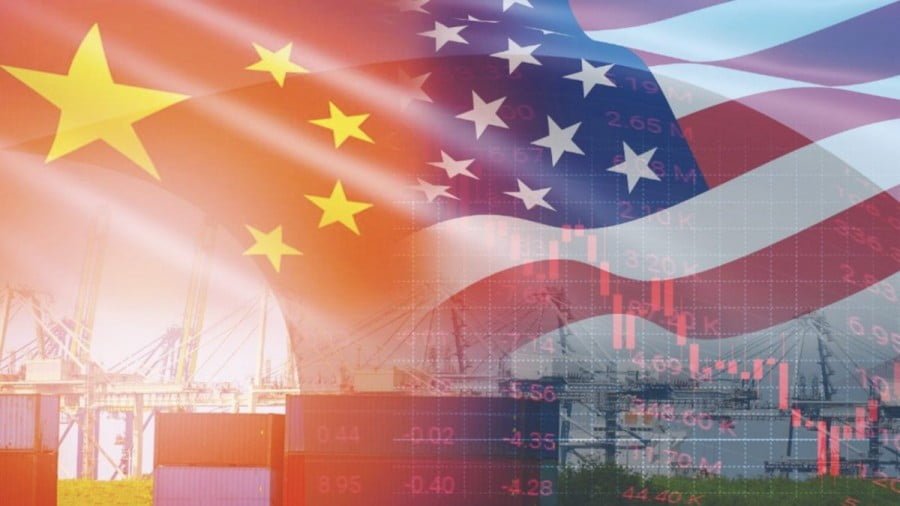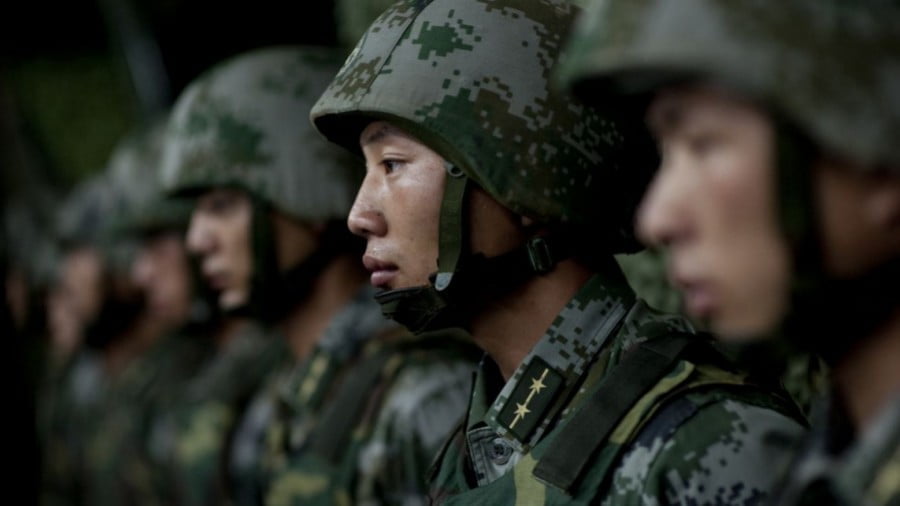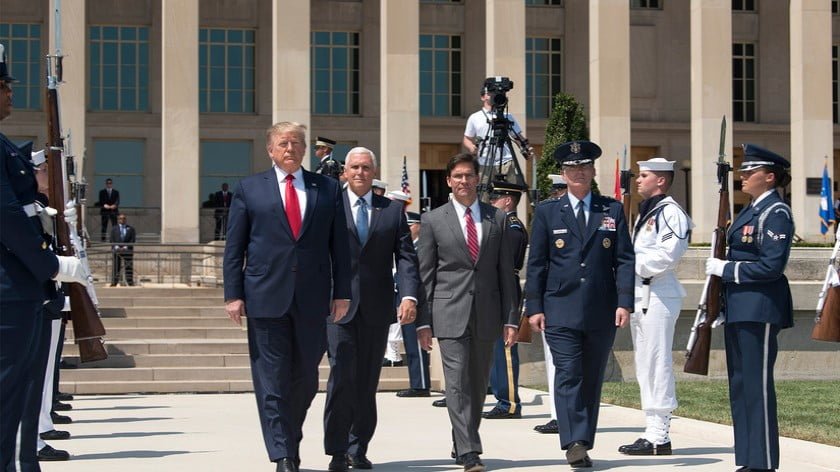How China Won and US Lost the Trade War
Signed and sealed in a video conference ceremony after nearly eight years of grueling negotiations, the world’s largest free trade bloc was forged on November 15 in a show of collective defiance against protectionism that sets the stage for China to supplant the United States as the Asia-Pacific’s main trade engine.
Proclaimed as a win for the multilateral trading system, the Regional Comprehensive Economic Partnership (RCEP) harmonizes regulatory standards and allows member countries to offer themselves as an integrated market for investment, providing a confidence boost to aid a regionwide post-pandemic recovery.
Apart from the promised benefits of trade liberalization, the RCEP has been acknowledged more for its symbolic significance in relation to the world’s two largest economies, only one of which is a signatory to the deal. China’s inclusion in the pact will expand its economic reach and arguably help to solidify its position as a standard-bearer for globalization.
“What the RCEP clearly does is entrench China as the leading player within the free trade architecture of the Asia-Pacific, and it comes at a time when the United States is painted as a regressive force on free trade under Donald Trump,” said Harrison Cheng, an associate director with consulting firm Control Risks.
At the twilight of his presidency, Trump’s “America First” trade policy has made little impact on the overall US trade deficit and hasn’t resolved complaints about Chinese state-led economic policies. Analysts say Washington’s relative retreat from free trade multilateralism has likewise resulted in Beijing being better positioned to shape the rules of regional trade.
Amid uncertainty over the shape of trade policies to come under US President-elect Joe Biden’s administration, observers see the RCEP as widening Beijing’s economic sphere of influence despite US pressures aimed at decoupling supply chains and sanctioning Chinese technology firms.

Some regard the RCEP as a China-backed counterweight to the Comprehensive and Progressive Agreement for Trans-Pacific Partnership (CPTPP), the successor to a trade deal championed by the Barack Obama administration that excluded Beijing in a bid to draw its neighbors closer to the US and coax it into making more decisive economic reforms.
The CPTPP entered force in late 2018 absent Washington after Trump signed an executive order removing the US from the initial agreement. Seven of the RCEP’s 15 signatories are parties to the CPTPP, and with a market size five times smaller than the RCEP, its relevance risks being overshadowed amid lingering reluctance by some governments to ratify the deal.
Despite China’s economic heft, the RCEP isn’t formally a Beijing-led agreement. The 10-member Association of Southeast Asian Nations (ASEAN) grouping originally proposed the deal in 2012 and initiated negotiations the following year. The pact also includes Japan, South Korea, Australia, and New Zealand, representing nearly 30% of the global population.
“RCEP underscores the regional commitment to reducing tariffs and trade barriers within the Asia-Pacific even as global protectionist trends and the trade war between the US and China persist,” Cheng added. “ASEAN economies have steadfastly been on the side of lower, not higher, tariffs over these years, so it is natural for them to take up that leadership role.”
With a combined gross domestic product (GDP) of US$26.2 trillion, the RCEP puts Southeast Asia at its center and marks the first-ever free trade agreement between Northeast Asia’s industrialized economic powerhouses, China, Japan and South Korea. Certain factors have, however, magnified Beijing’s role within the grouping in the eyes of some observers.
India was involved in discussions to join the RCEP when talks began in 2013 and had initially been receptive to opening up its market for investments. But in an about-turn, New Delhi opted out of the agreement in November 2019 amid worries that the elimination of tariffs would hurt domestic producers and lead to a flood of Chinese agricultural and manufactured goods.
With the US outside of the pact, India would have served as a counterweight to China within the grouping. Its exit was a major blow to countries like Japan, which sought to persuade it to remain in the bloc over concerns that the RCEP could become too China-dominant, an apprehension reportedly shared by other nations involved in the negotiations.
Member states have said there is still room for India to join, however. As an original negotiating partner, New Delhi has been granted the right to re-enter the agreement at any time, subject to negotiations. As the largest RCEP participant by far, both in terms of GDP and population, Beijing looks poised to exert its competitive advantages.

Rashmi Banga, a senior economist at the United Nations’ development agency UNCTAD, believes China’s manufacturing and exporting prowess would inevitably lead to such dynamics. “For many ASEAN countries, existing exports to other RCEP members will decline post-RCEP since the preferential access will now be shared with China,” she said.
Not all of the RCEP’s trade and tariff dynamics are expected to yield benefits to Beijing, say trade specialists. Chinese industries could suffer if the agreement hastens an already apparent trend of labor-intensive manufacturing relocating to ASEAN countries, while Japanese and Korean car imports could potentially undercut homegrown competitors.
It also isn’t clear what impact the RCEP will have on efforts to kickstart growth in the aftermath of coronavirus-induced economic fallout, which has pushed millions across the region into poverty. That is despite hopes expressed by signatory governments of the agreement becoming an economic recovery tool in the battle against Covid-19.
Trade specialists mainly agree that the agreement will support supply chain integration, increase regional cross-border trade, and accelerate skill and technology transfers. But because the RCEP will gradually eliminate as much as 90% of tariffs on a broad range of imports over a 20-year period, trade and investment gains won’t be immediately felt.
“With Covid-19 still showing high new infection counts in several emerging markets in the region, and also a resurgence of cases in countries which appeared to have contained their outbreak, we do not think the RCEP will be a silver bullet for the ongoing economic malaise,” said Jason Yek, Asia country risk analyst for Fitch Solutions.
UNCTAD economist Banga suggests, moreover, that the RCEP’s trade liberalization could be more of a hindrance to recovery than a help. “At the times of crisis, governments need simple and effective policy tools like tariffs to generate additional revenue. Taking any binding commitments will result in loss of both fiscal as well as policy space,” she said.
One of the agreement’s key benefits is that it creates a common set of “rules of origin” that officially define from where a product originates, which will facilitate less procedures and easier movement of goods within the bloc. The RCEP can also be seen as a framework for building on the foundations of existing bilateral free trade deals between pact signatories.
Apart from harmonizing tariff schedules and customs procedures for both the Chinese and regional markets, the 510-page agreement establishes rules in 20 areas and includes provisions on intellectual property, telecommunications, financial services, e-commerce and professional services with the aim of simplifying how regional supply chains function.

“RCEP is a substantive agreement with its benefits accruing over the long-term,” said Steven Okun, a senior advisor at trade consultancy McLarty Associates. “It takes time for governments to implement such a massive trade agreement and for businesses to understand how to take advantage of those reforms. It will not happen overnight.”
The RCEP will officially enter into force 60 days after six ASEAN members and three others domestically ratify its contents in their respective legislatures, a process that could take at least several months or potentially even years if domestic opposition to the agreement’s fine print or concerns of overdependence on China prove to be a roadblock.
With tensions between Beijing and Canberra pushing bilateral relations to their lowest ebb in recent memory, trade specialists say Australia’s ratification process could be impacted. Malaysia and Thailand, though on better terms with China, have dithered on formally acceding to the CPTPP, raising potential questions about their commitment to the timely ratification of the RCEP.
“For the time being, RCEP further disadvantages US exports to Asia and will further deepen inter-regional trade and tariff reductions with China front-and-center,” said Okun. “RCEP itself does not make China central to the region. China’s size in terms of population, economy, market and governmental actions are what make China central to the region.”
Chinese President Xi Jinping pushed his nation’s vision of trade in a keynote speech at the Asia-Pacific Economic Cooperation (APEC) CEO Summit on November 19, where he vowed to “continue pushing for liberalization of trade and investment and sign more high-standard free trade agreements with other countries.”
In a veiled reference to the US, he claimed China would seek only to further integrate itself with the world economy and reject decoupling aimed at forming a “small circle that is closed and isolates others.” The RCEP is expected to further extend Beijing’s deepening reach into strategic Southeast Asia, a region at the center of an escalating US-China rivalry.
Despite the pandemic, trade between China and ASEAN increased in the first nine months of 2020, with total trade worth $481.8 billion, overtaking the European Union as China’s largest trading partner. The rapidly increasing volume of trade between Beijing and ASEAN nations coincides with a dearth of US diplomacy toward the region.

Trump, who is preoccupied with long-shot legal attempts to overturn his thumping loss at the November 3 election, skipped ASEAN’s annual summit for the third time last week, opting instead to send national security adviser Robert O’Brien, the lowest level representation since 2011, to represent Washington via video conference.
The US president did, however, join a virtual APEC summit on November 20, his first appearance at a meeting of the 21-nation forum since 2017. Trump delivered a speech to fellow leaders during the two-hour event, which was not open to the media. Sources said his remarks focused mostly on domestic issues and his reputed successes in office.
The RCEP’s signing has given impetus to calls for the next US administration to prioritize regional diplomacy and return Washington to international trade agreements. A failure to course-correct would, say regional analysts, put the US at risk of losing its influence and strategic positioning within the fastest-growing region on earth.
“The US will need to create a more forward-looking strategy for engaging with the region. This includes greater participation and attendance at ASEAN events and other regular meetings in Asia. It will also need to figure out how to create stronger economic engagement,” said Deborah Elms, executive director of the Asian Trade Centre consultancy.
Focus has turned to how the Biden administration, which is set to inherit a tariff-raising trade war that has worsened ties with US allies, would alter its approach to China and what tactics it would likely deploy in a bid to increase pressure on Beijing at a time when there is strong bipartisan support for doing so in Washington.
Though Biden is expected to end the Trump administration’s regional disengagement by adopting a more multilateral approach, the RCEP’s signing is seen to have put the US on a weaker footing ahead of his inauguration in January, with the country no longer perceived as essential to trade promotion despite its economic heft, consumer wealth and vast domestic market.
“RCEP poses an additional challenge for the incoming Biden administration given, at best, the US will not rejoin the CPTPP anytime soon given the US domestic political climate towards the CPTPP and the pandemic and economic situation demanding the administration’s full attention,” said Okun of McLarty Associates.
The RCEP is seen as less comprehensive than the CPTPP, which is itself a diluted version of the earlier Trans-Pacific Partnership (TPP), which Trump withdrew from after lambasting the deal as a rapacious symbol of globalization responsible for the offshoring of American jobs.
The TPP, one of Obama’s signature foreign policy initiatives, became a political lighting rod in the run-up to the 2016 US election, courting opposition from both sides of the aisle. It garnered controversy across the Pacific as well, with some governments seeing its provisions as highly and unnecessarily intrusive when weighed against its potential benefits.

Unlike the RCEP, which primarily focuses on market access with fewer political or economic concessions, the TPP and its later incarnation CPTPP include labor and environmental provisions. The former contained stringent intellectual property protections pushed by the US that were not preserved when the TPP became the CPTPP.
The TPP, which aimed to circumscribe the role that state-owned enterprises (SOEs) would be allowed to play, a complicating factor in the context of Southeast Asia where SOEs still carry significant economic weight, came to be viewed in some quarters as too advantageous to foreign investors at the expense of local businesses and populations.
“During the initial TPP negotiations, there was fierce domestic resistance because of concerns that US participation would privilege the interests of large multinational corporations, undermine countries’ sovereignty, and strong-arm other signatories into accepting American standards,” said Elina Noor, director of the Political Security Affairs at the Asia Society Policy Institute
“Those concerns will no doubt be reignited if the US were to express interest in joining the CPTPP.”
While both Malaysia and Brunei are signatories to the CPTPP, neither has ratified the agreement. Mohamed Azmin Ali, Malaysia’s minister for international trade and industry, reportedly attached conditions for the resumption of trade negotiations with the US to join the pact, remarking that “fair trade” and a level playing field must be ensured.
Without the US, the CPTPP’s market size is less than half the RCEP’s annual trade value and combined GDP. If America were part of the agreement, it reportedly would have accounted for 40% of global trade. Without it, the CPTPP accounts for just 13%. The deal includes Canada, Chile, Mexico, and Peru, which have a low volume of trade with ASEAN nations.
Xi surprisingly said that China would “favorably consider” joining the 11-member CPTPP during Friday’s APEC summit, the first time he has ever publicly commented on joining the deal. Beijing’s entry to the pact would make China the largest participant in the region’s two biggest trade arrangements, neither of which include Washington.
“In the long run, ASEAN members are going to want the US to be more engaged in free trade initiatives because of the size of the US economy and the desire for a balance of power in the region. That being said, how that engagement will look is quite ambiguous at this point,” said Cheng of Control Risks.
“What is clear in the early days is that Biden is keen to signal to Asia that the US will indeed seek to be more engaged than it was in the past four years. However, the CPTPP remains highly divisive in countries that have yet to sign up to it and even among those who have yet to ratify it, so that ship might have already sailed,” he told Asia Times.

Domestic priorities, especially containing the spread of Covid-19 in the US, are expected to take precedence over foreign policy objectives once Biden assumes office in January. But the geopolitical precedent set by the RCEP, which structures Asian rather than Western markets as final trade destinations, could give impetus to a reconfiguration of US engagement.
“The signing of RCEP could change the trade debate in the US by reframing the CPTPP not just as a trade agreement which impacts US businesses, workers and the environment, but also a framework which provides the US and like-minded countries a way to compete with China by setting the rules for competition in the region,” said Okun.
“The pandemic and the economy will be front and center for the Biden administration on day one. In the circumstances, there is no expectation that the Biden administration would turn to the CPTPP, which would take a renegotiation based on how much has changed in the past four years both politically and technologically, at the start of its term,” he added.
US-China ties are likely to remain a source of uncertainty for Asia going forward, despite Biden being regarded as moderate and more predictable than Trump. Analysts say the US will have a better chance of narrowing China’s influence by returning to multilateral fora, where the next US president is expected to capitalize on diplomatic friction between Beijing and other regional nations.
The signing of the RCEP is first and foremost a vote of confidence in multilateralism. But its formalization against the backdrop of the Trump administration’s attempts to ratchet up pressure on China through export controls and sanctions indicate that Washington’s strategy has, in fact, done little if anything to prevent Beijing from setting the global trade agenda.







